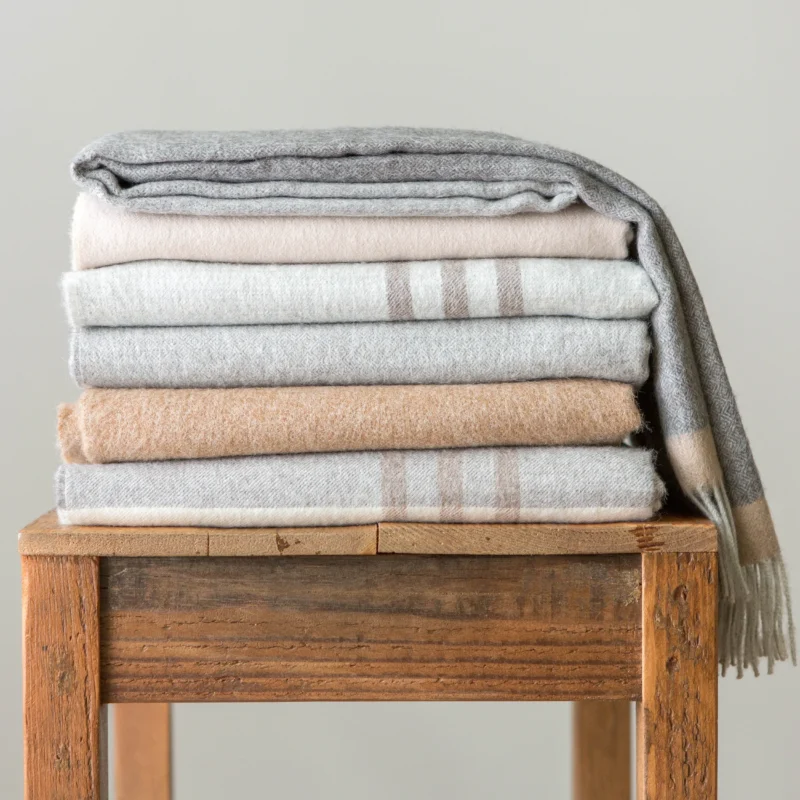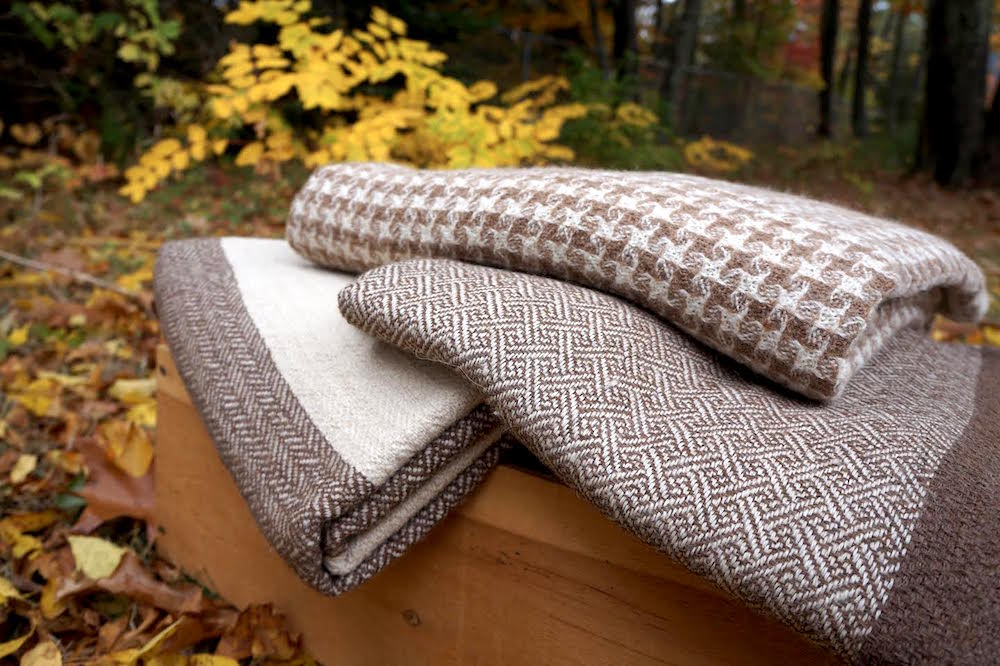How to Wash Alpaca Blanket
How to wash an alpaca blanket is an essential question for those who own them. The alpaca blanket is extremely soft and warm so it makes us feel cuddled, cuddled, and is a perfect companion in this cold winter. Knowing how to care for and care for an alpaca blanket will help maximize its use.
Below we have helped you summarize the most detailed and easy-to-understand alpaca washing steps that anyone can follow. We also provide some tips and recommendations on how to keep your beloved blanket like new for many years of use. Let’s continue reading!
Contents
1. What is an Alpaca Blanket and Where Do They Come From?

After all, where does an alpaca blanket come from is probably a question many people wonder. It is, in fact, a yarn spun from the alpaca species, a member of the camel family native to the South American Andes. They are extremely soft, glossy, and highly insulating thus making them perfect in cold weather. This fiber is superior to wool because it does not contain lanolin, so it does not cause skin irritation during use.
Alpaca has two main types, Huacaya and Suri, but each type has distinct structural characteristics. While the Huacaya breed has shorter and thicker hair, the Suri is made up of long, fine hairs. This is the most basic difference between the two types, depending on the purpose of use and economic ability, there will be different choices. However, there is a general fact that most alpaca blankets on the market are made from Huacaya because it is cheap and easy to use, so their popularity is also higher.
2. Benefits of Owning an Alpaca Blanket
Why does everyone want to own an alpaca, the answer is that it has great benefits that no other blanket can match.
Firstly, it’s the softness and coziness it gives them that makes them perfect for cuddling in the winter.
Second, it does not contain lanolin, so it does not cause irritation for people with allergies or sensitivities, and the ability to resist dust mites is also the reason why alpaca blankets are the perfect choice for sensitive people.
Thirdly, alpaca blankets have very good fire retardant properties, and high insulation capacity, so they will be a perfect addition to the house that makes us feel secure and safe when used.
In addition, it is extremely light and can be used for many years if we know how to care for and maintain it properly. Add to that its resistance to stains and odors making it perfect for any housewife. This makes them feel easier and more relaxed in the washing process
The above are strong arguments suggested by 9Blanket in favor of anyone who should have an alpaca blanket of their own.
3. What’s the Recommended Way to Wash Alpaca Blankets?
Before you proceed with the washing process, carefully review the manufacturer’s product care instructions first and follow them first before any other instructions.
If there are no instructions then prioritize hand washing or dry cleaning this will ensure the safety of your beloved blanket.
Depending on the blanket, there will be one that can be machine washed on a gentle cycle, low spin speed, and cold temperature. If you turn the back of the blanket over to check if it is machine washable.
It is important not to use detergent to clean, so use a sufficient amount to avoid causing the blanket to become dry.
Finally, to avoid damaging the texture of the fibers, limit the use of bleach and fabric softeners.
4. How To Clean Alpaca
3.1. Spot Treat
If your blanket has stains from sifted food, spilled drinks, or stubborn stains, spot treating is essential. Because these are stubborn stains, it is difficult to wash off if not treated first, not to mention it has the ability to spread to other areas. So please take a few minutes to process it first, I guarantee it won’t take too much of your time.
To treat such stains, wet your alpaca blanket with cool water, apply a few drops of detergent to the stain, then rub gently on the stained surface. You can use a lint-free cloth to remove excess soap. Keep repeating the process until you feel satisfied.
3.2. Pretreat
Whether you wash your alpaca by hand or machine, it’s a good idea to pre-treat stains with mild detergents that won’t damage the blanket. Simply place your alpaca blanket in warm or cold water with a little fiber-friendly detergent and soak for half an hour. You do not need to brush or scrub in this step because our main purpose is to let the soapy water soak into the fibers and prevent the stains from penetrating deeper.
The point to note in this step is to absolutely not use hot water and strong detergents if you do not want to destroy your beloved blanket. In addition, we recommend soaking only after thoroughly dissolving the detergent in the water.
3.3. Machine Wash
Here is the process of washing alpaca blankets by machine:
- Step 1: After performing the pre-treatment process, put the blanket in the washing machine
- Step 2: Set a delicate and gentle wash cycle, use cold water throughout the wash, and make sure the spin speed is at the lowest setting.
- Step 3: Add the right amount of detergent or washing powder for the weight and size of the blanket. This can be consulted online or in the manufacturer’s instructions
- Step 4: After finishing the washing cycle, quickly remove the blanket to minimize wrinkles.
3.4. Handwashing
Hand washing is always the best and safest method to wash any fabric, especially alpaca.
We can inadvertently degrade the quality of fabrics if we use too much dry cleaning solvents and detergents containing enzymes. One thing to keep in mind is that alpaca is sensitive to the temperature of the water and can cause fibers to shrink if not washed properly. So we have come up with the following hand-washing procedure;
- Step 1: Fill the sink with cold water, then add 1-2 caps of gentle detergent and dissolve them
- Step 2: Submerge the blanket and gently stir the solution with your hands and soak for a maximum of 30 minutes.
- Step 3: Rinse the blanket thoroughly by running water through it, repeat until all soap is removed.
- Step 4: After rinsing, proceed to squeeze the water out of the blanket, not squeeze it to ensure its softness and original shape.
- Step 5: Leave to dry in a ventilated place, avoid direct sunlight.
3.5. Dry & Finish
After washing, lay your blanket on a flat surface and let it dry naturally. We should not hang alpaca blankets because the weight of the water can cause the blanket to collapse and lose its original shape. When drying, you should avoid direct sunlight from heat sources that can sunlight, radiators, … because it will cause our blankets to yellow, shrink more seriously, and may be damaged. damaged and unusable.
Choose a well-ventilated area to make sure your blanket is completely dry. This may take a few days to complete but it is the best way to protect your blanket. And especially pay attention to reuse only when it is completely dry and no longer wet.
To get rid of wrinkles on the blanket, instead of ironing it, which will crush or flatten the natural fibers, I recommend that you iron it will be the best choice.
Store
Items made up of alpaca fibers should be folded for storage to prevent stretching or deformation.
It is recommended to use a breathable canvas bag with a zipper to prevent the entry of insects and moths.
Fold up the alpaca blankets and tuck them away in the closet after they’ve been washed so they’re ready to be used for years to come.
See More Great Blog Posts, You Will Definitely Like:

